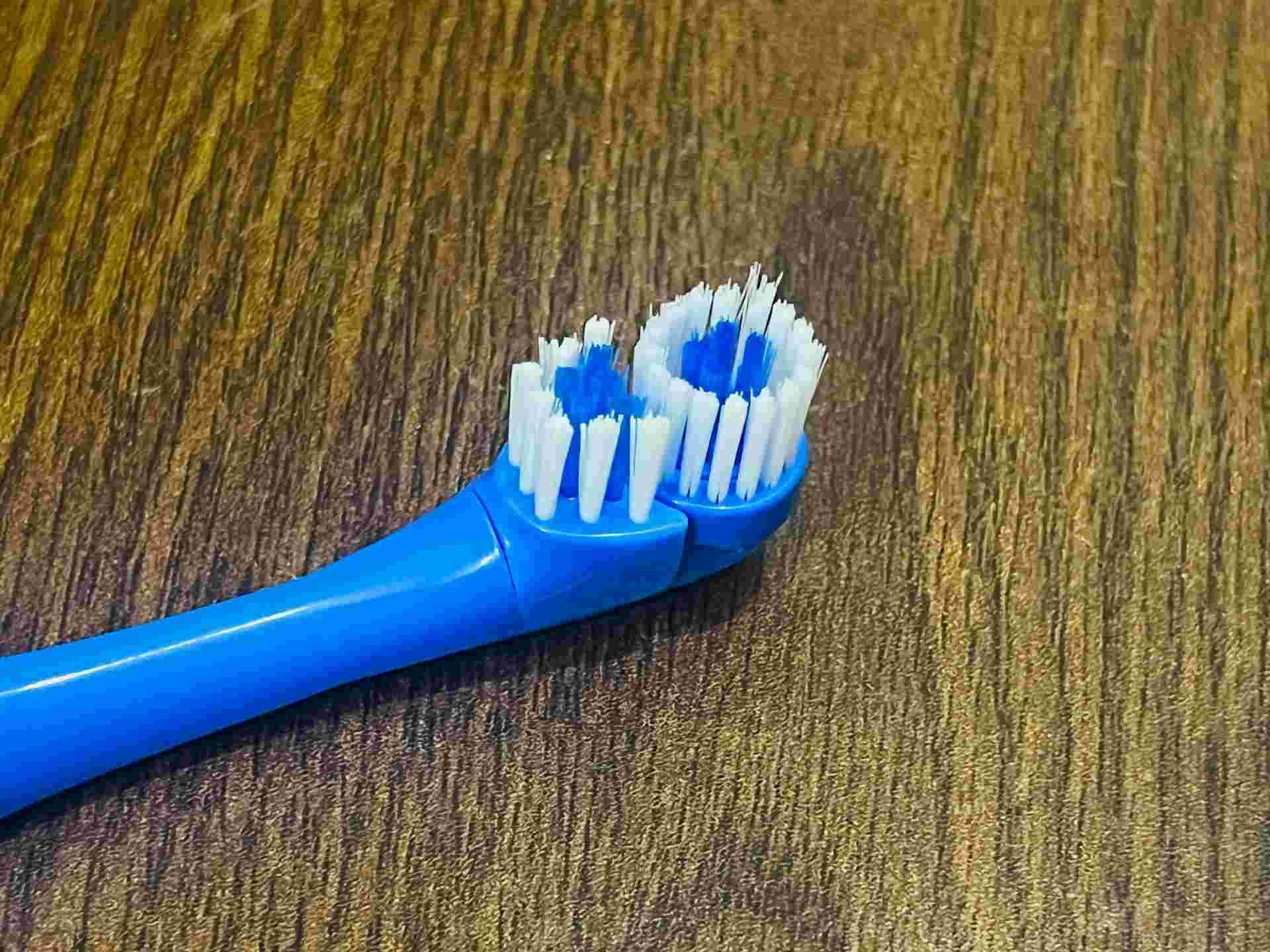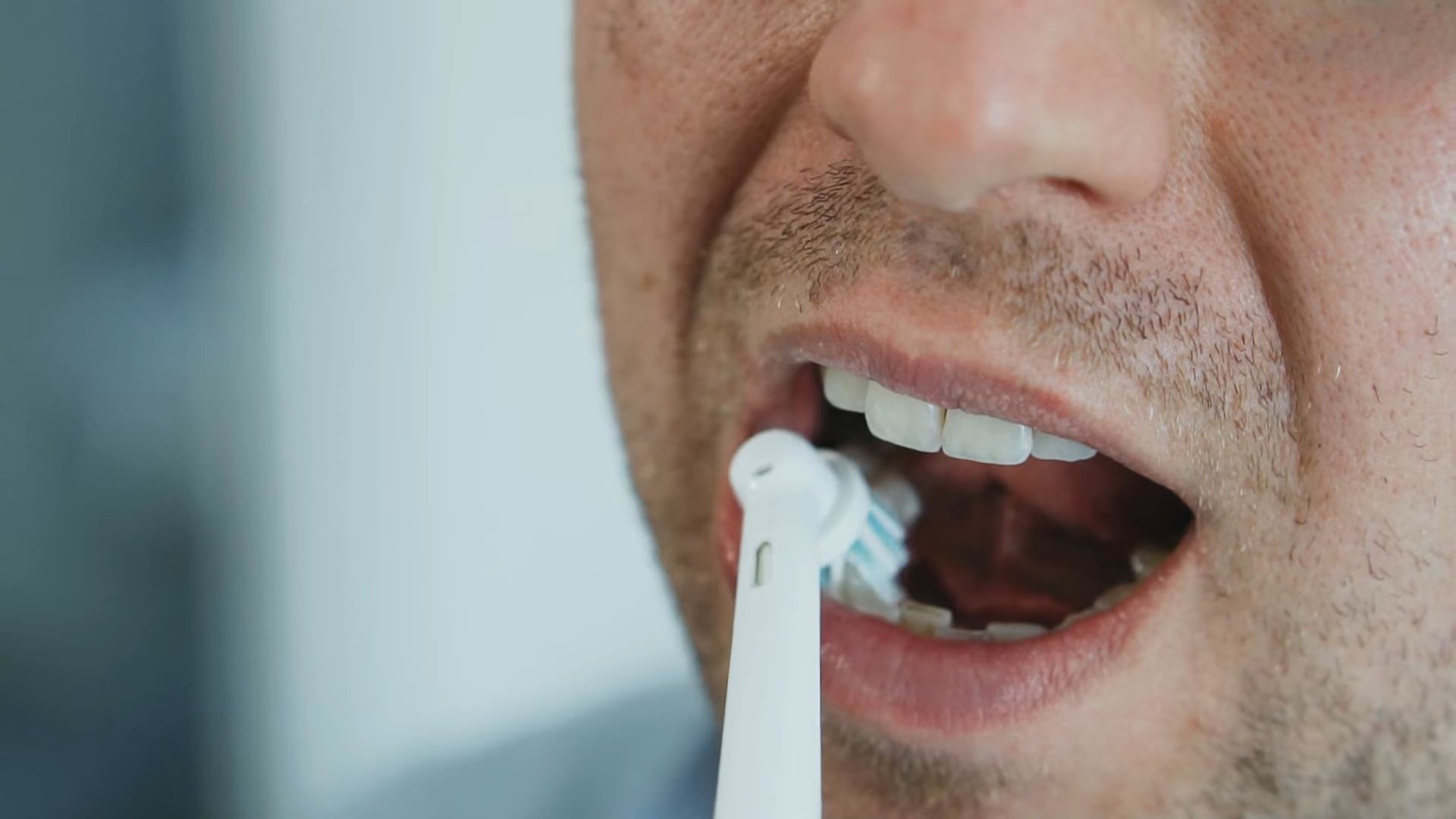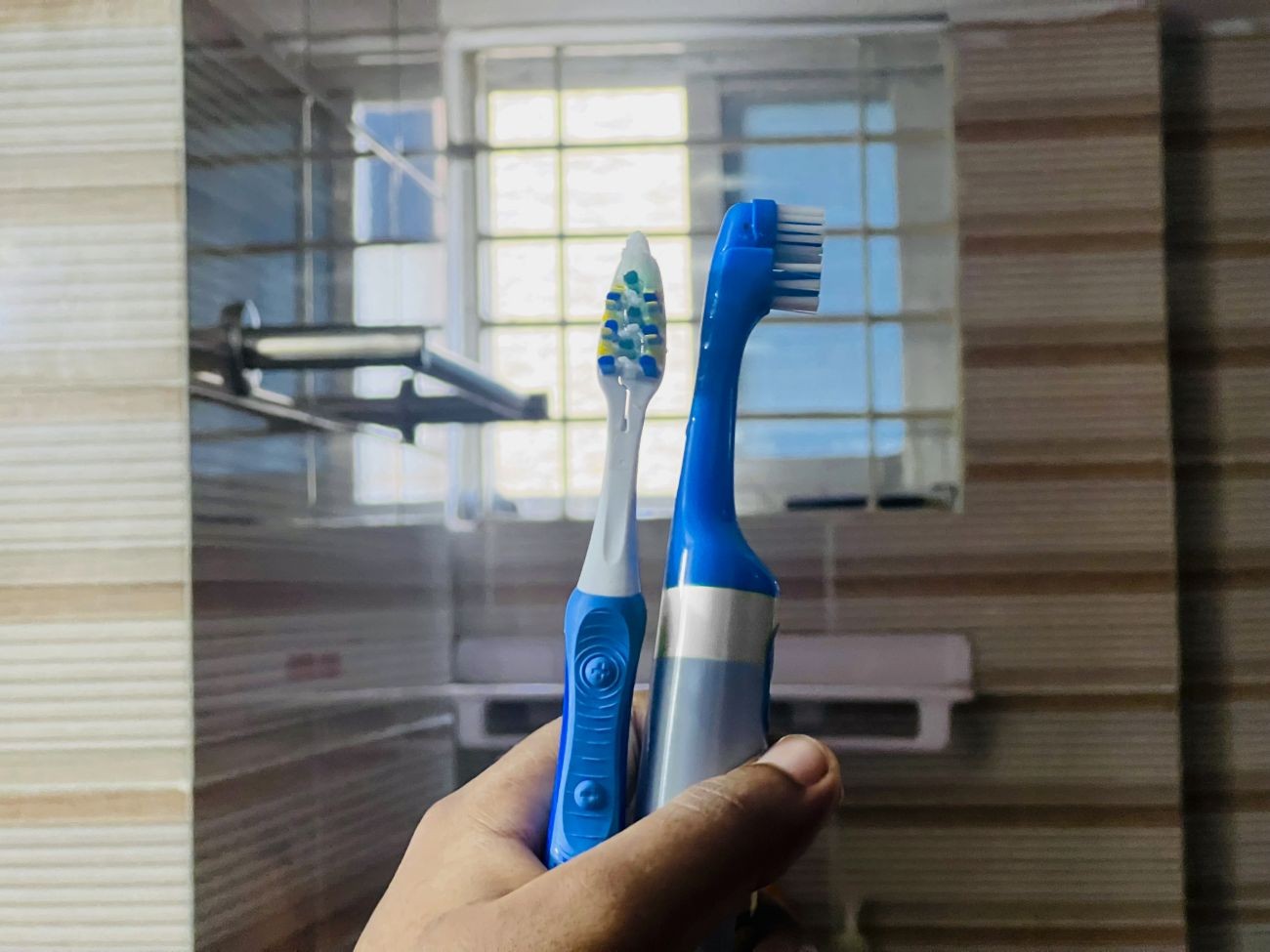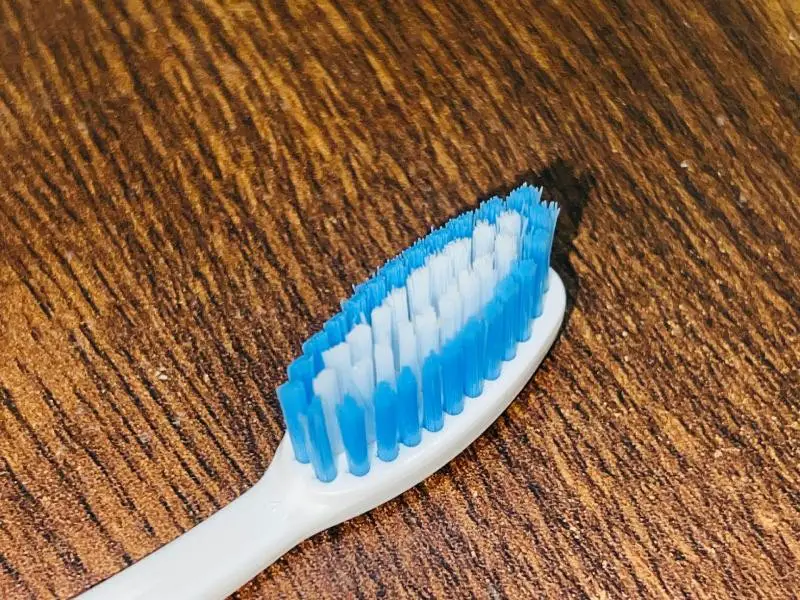There are two most common toothbrushes in the market; these are electric and manual. Manual toothbrushes usually have rectangular brush heads. However, most electric toothbrushes have both rectangular and round brush heads.
I am a fan of electric toothbrushes and regularly use one. As a regular user, one thing came to my mind if round toothbrush heads are better. After that, I started researching about the matter and found that round toothbrushes are better than rectangular ones in many ways.
6 Reasons Why Round Toothbrush Heads Are Better
I am someone who places great importance on dental health. I have the desire to establish an effective oral care routine, and I have realized that there are notable advantages when opting for round toothbrush heads instead of rectangular ones.
After doing comprehensive research and various trials involving different shapes of toothbrush heads, I am convinced that round toothbrush heads are the optimal preference. Now I will outline 6 persuasive reasons why you should use a toothbrush head with a circular shape:
1. Easy Access To Hard-To-Reach Areas
One of the main benefits of round toothbrush heads is their small and rounded shape. This design allows you to easily access areas of your mouth that are typically difficult to reach.
Whether it’s the back of your teeth or the spaces between them, the round brush head ensures a thorough clean in these challenging spots.
2. Complete Coverage For Effective Cleaning
Round brush heads fully surround each tooth, providing complete coverage. This means that the bristles reach all the way to the edge of your gums, ensuring a comprehensive clean.
Unlike other brush head shapes, the spherical design of round toothbrush heads allows for better coverage of the surface area of each tooth.
3. Effective Plaque Removal
The rotating motion of round toothbrush heads makes them highly effective at eliminating plaque from confined spaces. These brush heads clean each tooth individually by spinning in one direction and then the other, giving your teeth a 360-degree clean.
Suppose you have crooked teeth or hard-to-reach areas in your mouth. In that case, round toothbrush heads are particularly beneficial as they can easily access all the nooks and crannies.
4. Ideal For Small Mouths And Hard-To-Reach Regions
Round toothbrush heads are effective and more maneuverable in the mouth. Their smaller size makes them easier to handle and navigate around all areas of your mouth.
If you have a smaller mouth or difficulty reaching certain regions, round toothbrush heads can be a better option for you.
5. Targeted Cleaning Experience
Due to their design, round-head electric toothbrushes provide a more targeted and concentrated cleaning experience.
As they are designed to clean one tooth at a time, they can more easily target and remove plaque in confined areas of the mouth. This makes them an excellent choice for individuals who require a more precise cleaning.
6. Optimal Pressure Distribution
Round toothbrush heads distribute pressure evenly across your teeth and gums, ensuring that you are not applying excessive force in one area. This prevents overbrushing, which can lead to tooth sensitivity and gum recession.
The even pressure distribution provided by round toothbrush heads promotes a balanced and effective brushing experience, maintaining the overall health of your teeth and gums.
Disadvantages Of Round Toothbrush Heads
You already know the many benefits of using a round toothbrush head. Like most things, there are some disadvantages of round head toothbrushes. Here is what I found:
1. Difficulty In Reaching Certain Areas
One of the main drawbacks of round toothbrush heads is that they can make reaching certain areas of your mouth challenging, especially if you have larger teeth or a broader jaw.
The rounded shape may not fit well between teeth, making cleaning those tight spaces and crevices harder.
2. Changing The Brushing Technique
To effectively use a round-head toothbrush, you need to brush each tooth separately. Unlike a manual toothbrush, where you can brush in a back-and-forth motion, using a spinning toothbrush requires a different technique.
You must go around each tooth individually, ensuring that the brush head’s rounded form is most apparent. This change in brushing technique may take some time to get used to and might require more patience.
3. Strain On Patience
Brushing each tooth separately with a round toothbrush head can be time-consuming and may strain your patience.
It requires you to firmly clean each tooth, which can take longer than a traditional toothbrush. If you have a busy schedule or prefer a quicker brushing routine, this method may not be best for you.
Round Head vs. Rectangular Head Electric Toothbrush
Now that you know the advantages and disadvantages of round-head electric toothbrushes, let us compare them with their rectangular counterparts. Suppose you are someone who is looking for the perfect toothbrush head. In that case, it’s essential to understand the differences between these two shapes to make an informed decision:
Shape
The round-head electric toothbrush features a circular brush head, while the oblong electric toothbrush has a rectangular shape. The round head covers a single tooth at a time, ensuring maximum precision during brushing.
On the other hand, the oblong shape allows for cleaning multiple teeth at once, making it a more convenient option for some users.
Cleaning Method
Regarding the cleaning method, the round-head electric toothbrush utilizes a rotating/oscillating motion, effectively removing plaque and debris from the teeth.
In contrast, the oblong electric toothbrush uses a vibrating or sonic motion, providing a different brushing experience.
While both methods are effective, the round-head toothbrush offers greater precision in reaching tight spaces, ensuring a thorough cleaning every time.
Bristle Arrangement
The arrangement of bristles is crucial for an effective brushing experience. The round-head electric toothbrush typically has bristles arranged in concentric circles or spiral patterns. This unique arrangement ensures that every corner of the teeth is reached, leaving no plaque behind.
On the other hand, the oblong toothbrush usually has bristles arranged in rows and columns, which may not provide the same level of precision as the round head.
Gingival Margin Access
Access to the gumline is essential for maintaining good oral hygiene. With the round-head electric toothbrush, you may require some adjustment due to the larger brush head. However, reaching the gingival margin becomes easier once you get used to it.
However, the oblong toothbrush may present slightly harder access to the gumline than the round head, requiring extra effort to ensure proper cleaning.
Plaque Removal
The round head and rectangular toothbrushes effectively remove plaque but may have different strengths. The round-head toothbrush removes plaque from hard-to-reach areas due to its greater precision.
In contrast, the oblong toothbrush may remove plaque better on the tooth surfaces, providing a thorough cleaning experience.
Learning Curve
Adapting to a new toothbrush may require some time and adjustment. Users generally find getting used to the round-head electric toothbrush easier due to its shape and cleaning method.
The oblong toothbrush may require a slight learning curve, especially for those accustomed to the round head shape. However, with a bit of practice, both toothbrushes can provide an equally satisfying brushing experience.
Does Toothbrush Head Shape Matter?
Yes, the form of your toothbrush head does affect how well it cleans your teeth. Choosing the proper toothbrush head may make all the difference in maintaining excellent oral hygiene since toothbrush heads come in various shapes and sizes.
When it comes to selecting the ideal toothbrush head for you, it ultimately relies on your own requirements and tastes and any suggestions made by your dentist. Here are some important things to consider:
1. Bristle Configuration And Head Size
The bristle configuration and head size play a crucial role in how well your toothbrush can clean your teeth. A toothbrush with too hard or too soft bristles may not effectively remove plaque and food particles.
Similarly, a toothbrush head that is too large may not be able to reach all areas of your mouth, while a smaller head may provide better access to hard-to-reach places.
2. Coverage And Efficiency
The toothbrush head’s size determines your brushing’s coverage and efficiency. A larger head can cover a wider surface area of your teeth, making it easier to brush multiple teeth at once.
However, it may not be as effective in reaching the back molars or tight spaces between teeth. On the other hand, a smaller head allows for more precise brushing, especially in hard-to-reach areas.
3. Special Features
Some toothbrush heads have unique features to enhance your brushing experience. For example, angled bristles can help clean along the gumline and reach areas that are difficult to access with a regular toothbrush.
These unique features can provide a deeper cleaning or a gentle massage for your gums, depending on your specific needs.
Ultimately, your ideal toothbrush head will depend on your preferences and your dentist’s recommendations. Choosing a toothbrush head that effectively cleans all areas of your mouth and maintains good oral hygiene is essential.
FAQs
Now that you know round toothbrush heads are better, let’s take a look at some questions regarding the matter:
Does A Round Brush Clean Teeth Better?
According to some experts, a round brush head may be more effective than a rectangular one for cleaning teeth, especially the hard-to-reach molars.
A round brush head can adapt to the shape of each tooth and remove more plaque and bacteria. However, other factors such as brushing technique, frequency, and duration may also affect the quality of your oral hygiene.
What Kind Of Toothbrush Head Is Ideal?
This question has no definitive answer, as different toothbrush heads may suit different preferences and needs.
The ideal toothbrush head for you is the one that fits your mouth comfortably and allows you to reach all areas of your teeth and gums. Before choosing one, you may want to consider the toothbrush head’s size, shape, bristle type, and design.
Are Toothbrushes With Smaller Heads Better?
Some dentists recommend toothbrushes with smaller heads, as they can easily access the narrow spaces in your mouth and clean them more thoroughly.
A smaller head may also prevent you from brushing too hard or too fast, which can damage your enamel and gums. However, a smaller head may not be suitable for everyone, as it may take longer to cover the entire surface of your teeth and may not feel comfortable for some people.
Conclusion
Both round and rectangular toothbrush heads have their unique strengths, providing effective plaque removal and improving oral health. It ultimately boils down to personal preference and the specific requirements of your oral health.
Remember to seek advice from your dental professional before making any changes to your oral hygiene routine.
Here is 0ur Best Toothpaste For Electric Toothbrush Reviews 2023.







